
|   |

|   |
Nrithya Bharathi Festival - Sudha Sridhar e-mail: sudhasridhar@hotmail.com March 14, 2011 The dance festival Nrithya Bharathi organized by Natyasaraswathi, was recently conducted at Seva Sadan Auditorium, Bangalore, and featured about eight classical dance forms of India. It is also a travelling dance festival and the first edition was held in Hyderabad last year while the next editions are planned for other cities. The idea of a travelling festival stems from the fact that the artistes featured in the festival are generally not from the place of the event and it provides an excellent opportunity for viewing and appreciating artistes from various parts of the country. This year the organizing team had taken more efforts to ensure the success of the event and this is very much evident from the meticulous planning and execution witnessed during the festival. The selection of the artistes was also commendable as it had a right blend of youth and experience. The festival was inaugurated by the chief guest for the evening, eminent dance scholar Ashish Mohan Khokar of Bangalore. The honors were shared by Lalitha Srinivasan (Director, Nupura), Kuchipudi Guru Vedantam Ramu and Revanna, former minister of Karnataka state. 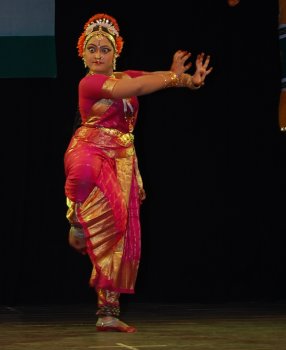 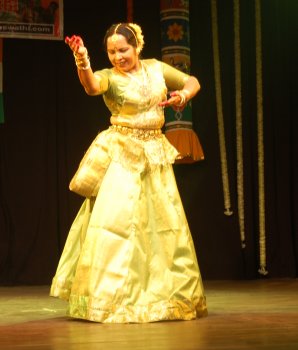 The festival kicked off with the performance of Jayanthi Mukherjee, a Kathak dancer from the City of Joy - Kolkata. It was followed with a classical item in Kuchipudi, namely the tarangam - dance on brass plate - the trade mark of the Kuchipudi dance form. It was performed nonchalantly by Bala Tripura Sundari of Tenali, Andhra Pradesh, to the song "Krishnam kalaya saki sumraram" in Mukari raga set to adi tala enumerating the various remarkable traits of Lord Krishna. While the evening witnessed most of the dance forms showcased by female dancers, one of the two male dancers of the evening was the brilliant, talented young Odissi dancer Soumya Bose from Bhubaneswar. One should say that his enchanting performance to the song "Jaya Bhagabati Devi Namo bara de" in Thodi raga was par excellence. 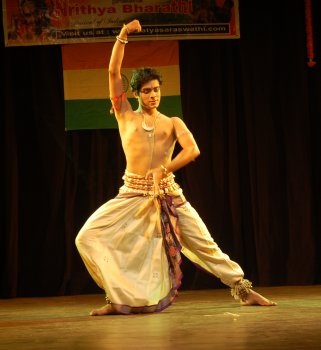 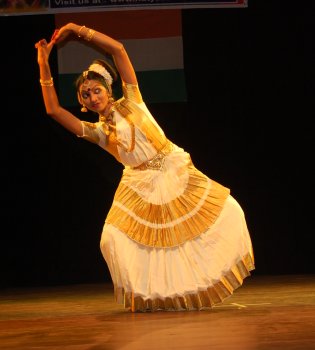 The next performance was that of Divya Nedungadi from Kerala. Her rendering of Mukhachalam in Mohiniattam style was set to the unique Kerala talam, Panchari in Ragamalika. Basically an invocatory piece, it brought out the pure nritta form with the graceful, ethnic movements of Mohiniattam. She followed it with a padam "Karykare Karmukil," an attempt to portray the emotions and actions of a peacock which is apparently thrilled by the imminent rainfall. The evening saw the sequence of dance forms set in a fashion wherein one each from the southern part was complemented with one from the other parts of the country; maybe the organizing team had a way of putting forth the universality and versatility of all the classical dance forms of the country, a clear evidence that all our dances are based on the Natya Shastra.  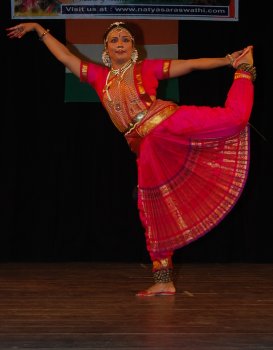 By now the audience which had swelled in numbers was seen lapping up the rich content dished out and next in turn was that of Manipuri style of dance performance by Debanjali Biswas, a beautiful and multi-faceted talent from Kolkata. She performed Prabandha Nartan, a composition describing Radha's tortuous journey to meet Krishna and the charming traits of Krishna's beauty. Once again, Lord Krishna the perennially captivating enchanter was the centre of attraction of the evening's performance. The honour of showcasing Bharatanatyam for the evening was on the shoulders of the capable Shilpa Darshan Kumar from Chennai. Her footwork was good. She started with a Mallari which is a traditional piece in raga nattai set to adi tala. Her apt selection of the piece rendered during the Pradosha kala of Pradosha day was heartwarming. This was followed with a padam "Aadikondar", which glorified the majestic nature of the dancing God, Lord Shiva, in his full glory. The next dance performance was that of Sattriya, by beautiful dancer Mridusmitha Das from Guwahati. She held the audience in an enthralled state with her pieces 'Krishna Vandana' - a beautiful vandana sung on raag Sareng in praise of Lord Krishna, 'Gopi naach' in a very graceful lasya style and "Pekno modono gopalo," an abhinaya piece. It should be said that the soothing Sattriya performance by Mridusmitha was well received by the audience since one doesn't get many opportunities to view this dance form in this part of the country.  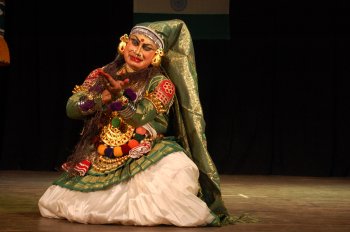 The last of the eight classical dance forms of India that was represented in the evening was that of a Kathakali performance by Probal Gupta. His depiction of the plight of Panchali in the aftermath of the insulting incident at the hands of the Kauravas was filled with excellent expressions and easily one of the best performances of the evening. The concluding dance item wherein all the eight performers of the classical dance forms showcased for the evening came together to a fusion dance on Vande Mataram was a colourful expression of all the stars of the evening. 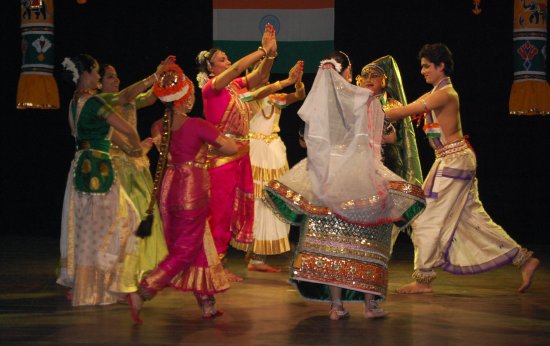 Well after the curtains came down on the festival, one could see the audience hanging around the venue spellbound. This travelling dance festival made it possible for art lovers to see all the dance forms on one single platform and also lent a great opportunity for the artistes to understand other dance forms. |